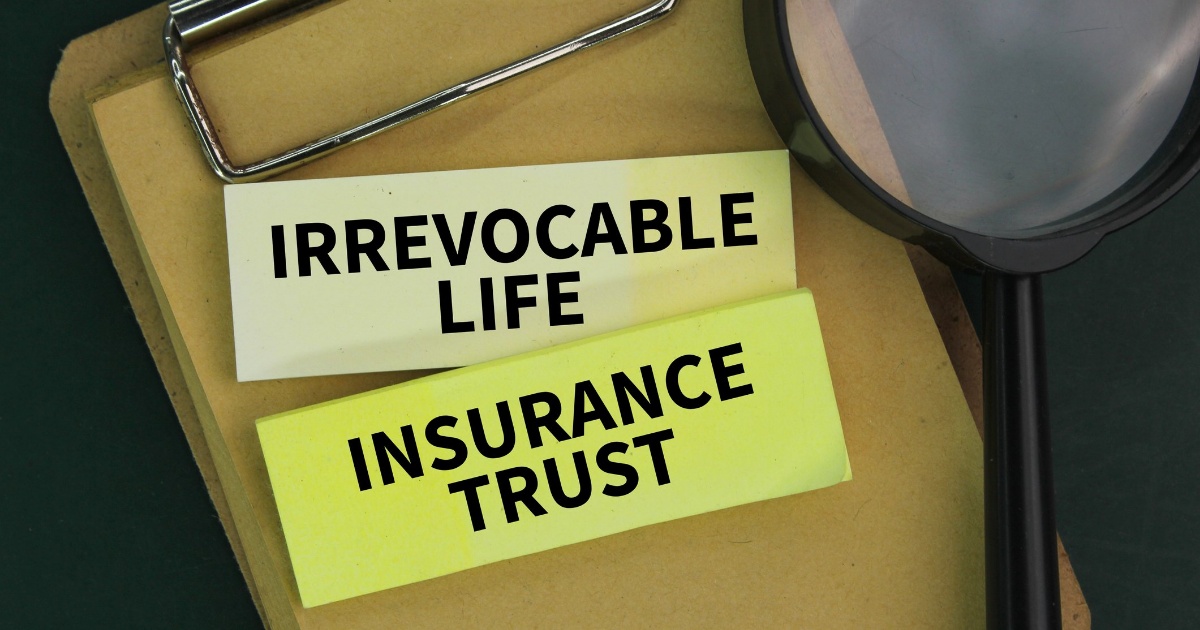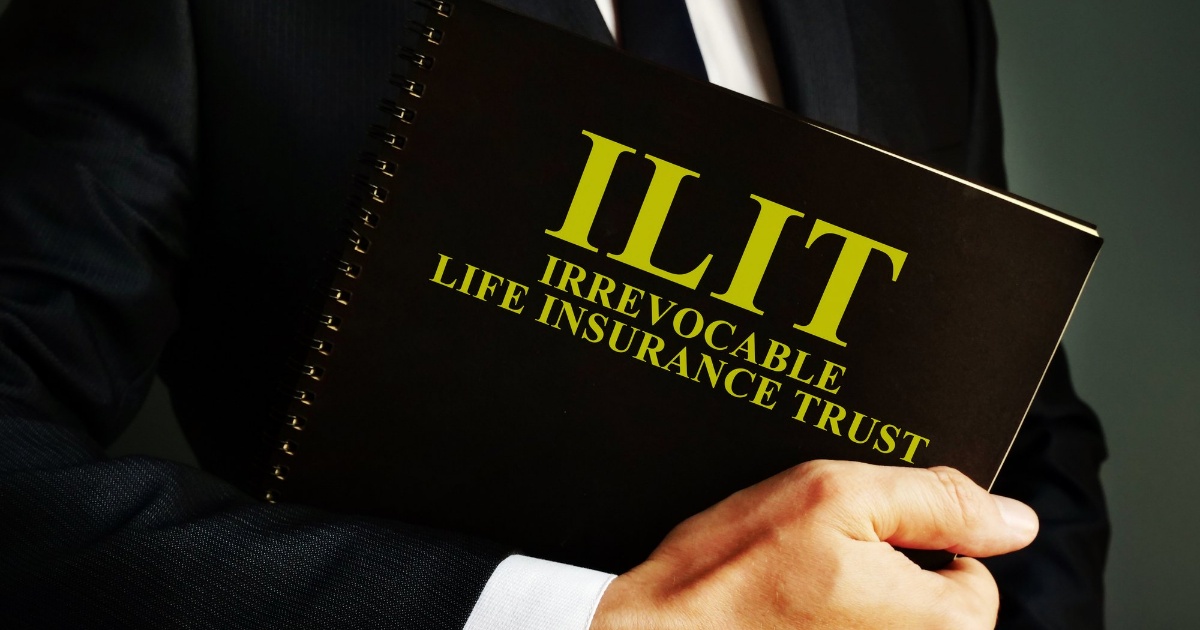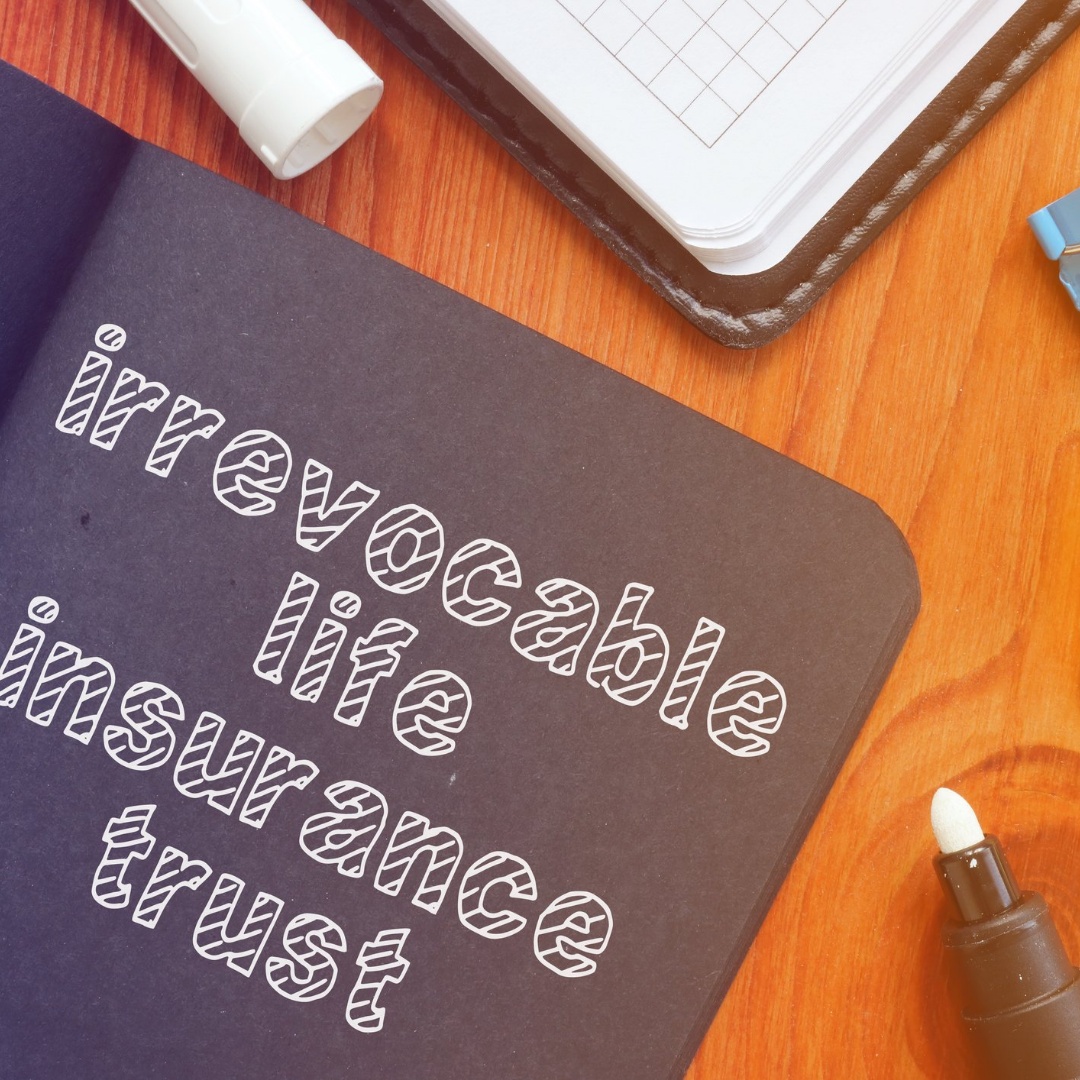Congress may debate the future of the estate tax, but families with real wealth don’t wait to see how the vote goes. An ILIT (Irrevocable Life Insurance Trust) estate planning strategy remains one of the most reliable ways to protect your legacy—regardless of shifting laws. Today’s proposals to repeal estate taxes sound promising, but history tells us they rarely disappear for long. And when they return, they come back sharper, more complex, and harder to plan around.
The real risk isn’t overpaying taxes—it’s being unprepared when the rules change again.
In a world where estate tax laws may disappear tomorrow and return the next day, the truly wise don’t rely on government promises—they build certainty.
That’s why proactive planners are turning to ILITs. When paired with a properly structured permanent life insurance policy, they offer something few financial tools can in uncertain times: control, clarity, and tax-free leverage.
This article isn’t a surface-level overview. It’s a clear, strategic blueprint for how to protect and pass on more of what you’ve built—no matter what Washington decides next.
We’ll cover:
- Why ILITs are still relevant—even if estate taxes vanish
- How permanent life insurance creates tax-free wealth transfer
- The hidden cost of underinsured estates
- How your CRT and ILIT can work in tandem
- The biggest mistakes people make when setting up ILITs
- And most importantly: why waiting could cost your family millions
Let’s get into it.
Understanding ILITs in the New Estate Planning Landscape
Let’s start with the basics: What exactly is an ILIT?
An Irrevocable Life Insurance Trust (ILIT) is a special kind of trust designed to own life insurance outside your taxable estate. Once it’s set up and funded—typically with a permanent life insurance policy—you give up control of the assets in the trust. That’s by design. In exchange, your beneficiaries receive the policy’s death benefit entirely free of estate taxes.
But here’s where the real value kicks in: The ILIT isn’t just a tax move. It’s a legal and financial firewall around your legacy.
At its core, an ILIT allows you to:
- Keep life insurance proceeds out of your taxable estate
- Shield the money from lawsuits, creditors, and divorcing spouses
- Control how and when your heirs receive funds—years or even decades after you’re gone
- Coordinate multi-generational planning with crystal-clear instructions
Now, with new legislation proposing a repeal of the estate tax, you might wonder: “If there’s no estate tax, do I even need an ILIT?”
Yes—and possibly now more than ever.
Because estate taxes are only part of the equation. An ILIT is still one of the most effective ways to manage, protect, and pass on wealth—regardless of what Congress decides this year or next. LITs don’t go out of style just because the estate tax does. They’re a control vehicle—not just a tax shelter.
In the current climate, where laws can flip with the next election cycle, smart families aren’t planning for what is. They’re planning for what could be. And they’re using ILITs to do it—quietly, strategically, and with lasting effect.
The Real Engine of Wealth Transfer—Permanent Life Insurance

If the ILIT is the car, then permanent life insurance is the engine. It’s what drives the strategy.
Most people think of life insurance as a payout after death. That’s not wrong—but it’s only the surface. In a properly structured ILIT, a permanent life insurance policy becomes something far more powerful: a multi-functional wealth vehicle that delivers tax-free liquidity and transfers assets with zero interference from the IRS or probate court.
When held inside an ILIT, the policy’s death benefit is both income tax-free and estate tax-free. That means your beneficiaries receive a lump sum—often in the millions—without losing a single dollar to taxes. It’s a clean, private, and efficient transfer of wealth, regardless of how estate tax laws evolve.
Now, if you own a permanent policy outside of a trust—personally or through a business—you can unlock a different advantage: access to the policy’s cash value during your lifetime. This tax-deferred growth and tax-free access can be a powerful tool for retirement income, business cash flow, or funding other investments. No other investment vehicle offers these same unique benefits.
That’s the beauty of permanent life insurance—it can be structured to serve you while you’re alive or to protect your heirs after you’re gone. Either way, it provides something most assets can’t: tax-free leverage.
And it solves a major issue that high-net-worth families often face: liquidity. Complex estates—especially those built around real estate or private businesses—often lack the cash to cover estate taxes or other obligations. Life insurance, when used inside an ILIT, creates instant liquidity exactly when it’s needed most, helping heirs avoid forced sales or fire-drill decisions.
Even if the estate tax disappears, no other financial instrument allows you to grow, protect, and transfer wealth with this level of efficiency. Life insurance remains the only asset class that can consistently create tax-free dollars exactly when and where they’re needed most.
You May Not Need an ILIT, But You Definitely Need More Life Insurance
Here’s a truth that surprises a lot of high-net-worth individuals: Even if you don’t set up an ILIT, there’s a good chance you’re still underinsured. And not because you can’t afford more coverage—but because no one has shown you how to structure it the right way.
Most estate plans treat life insurance as a checkbox—“yes” or “no,” term or whole life. But that misses the real value. Life insurance is one of the few tools in the financial world that creates tax-free dollars on demand. Not using it fully is like having access to leverage and choosing not to use it.
The real problem? Structure.
Many policies are set up incorrectly from the start. They’re underfunded, built for short-term needs, or ignored until they lapse. Others rely too heavily on term insurance—which may expire long before your heirs ever need it. And almost none take advantage of the flexible power permanent life insurance offers when it’s designed intentionally, as part of a broader strategy.
The question isn’t “Do I need an ILIT?” It’s “Am I maximizing the wealth potential of my life insurance?”
The truth is, using an ILIT or not, life insurance has a role to play:
- Life insurance can equalize inheritances between heirs who will and won’t take over the family business.
- It can create instant liquidity in otherwise illiquid estates—no sales, no stress.
- It can even be used personally, when owned outside of a trust, to generate tax-free cash flow during retirement or after a major liquidity event like a business exit.
Whether you hold it inside a trust for legacy planning or personally for retirement flexibility, life insurance gives you leverage no other financial product can replicate.
This isn’t about buying more insurance—it’s about designing a smarter plan. And far too often, that’s the piece that’s missing.
Combining the ILIT with Your CRT (A Strategy You May Already Know)
If you’ve explored Charitable Remainder Unitrusts (CRUTs)—and especially if you read our recent breakdown—you already know how powerful they can be. A CRT allows you to remove highly appreciated assets from your estate, defer capital gains tax, and generate income for life. It’s smart, elegant, and tax-efficient.
But there’s one challenge with CRTs that savvy planners always ask:
“What about the kids?”
Because the assets in a CRT eventually go to charity—not to your heirs. That’s where the ILIT steps in.

When paired together, the ILIT and CRT form a seamless strategy—one that funds your lifestyle and preserves your legacy. While the CRT provides you and your spouse with lifetime income, the ILIT quietly replaces the value of the donated assets with tax-free life insurance proceeds for your heirs.
The CRT funds your retirement. The ILIT funds your legacy.
This is a structure built for real complexity—perfect for those selling a business, offloading appreciated real estate, or donating stock near peak value. It solves three problems at once:
- Reduces current taxes
- Generates lifetime income
- Preserves generational wealth
The CRT takes care of you. The ILIT takes care of your family.
What makes this so effective is that the two trusts operate independently, but harmonize perfectly when designed together. Your CRT removes assets from your taxable estate and minimizes capital gains exposure. Your ILIT uses a portion of the income from the CRT (or outside funds) to purchase a permanent life insurance policy—completely outside your estate.
It’s a high-level move that most advisors never talk about. But for families who want to optimize taxes and ensure heirs are taken care of, there’s nothing more powerful.
Estate Planning for the Unpredictable—What If the Tax Rules Flip Again?
Here’s the thing about estate tax laws: they don’t change slowly—and they never change for long.
We’ve seen this before. In 2010, the federal estate tax was temporarily repealed, only to return a year later with tighter rules. Since then, the exemption amount has ballooned under one administration, been threatened under another, and could change again by 2026.
So while some families are banking on repeal, experienced planners know better than to rely on temporary wins, because what the government gives, it can—and often does—take back.
The real question isn’t if the rules will change. It’s when—and whether your estate plan will still hold up when they do.
That’s why ILITs and permanent life insurance remain essential pieces of a resilient wealth strategy. They’re not built for the current law. They’re built to withstand the next one. And the one after that.
- If estate taxes return with a lower exemption, your plan is already protected.
- Should Congress limit the future use of trusts or life insurance, you’ve already locked yours in.
- When liquidity is suddenly needed to settle debts, equalize inheritances, or buy out a business partner—your plan is funded and ready.
This is how smart families protect what they’ve built: not by reacting to policy, but by staying two steps ahead of it.
While others wait and see, the wise lock in leverage.
That leverage comes from acting while options are still on the table—while life insurance underwriting is still favorable, while legislative change is still pending, and while your legacy is still yours to structure on your terms.
ILIT Mistakes That Can Destroy Your Legacy

Even the most sophisticated estate plan can fall apart from simple, avoidable mistakes. When it comes to ILITs, those mistakes aren’t always dramatic—but the consequences can be.
These aren’t just technical errors. They’re strategic missteps that can undo years of planning, waste hundreds of thousands in taxes, or trigger family disputes that last for generations. Here’s what we see most often:
Waiting too long to set it up
An ILIT depends on life insurance. And life insurance depends on insurability. Too often, people wait until after a health event or near retirement to explore it—only to find out that premiums are too high or coverage is off the table entirely. The best time to build leverage is when you’re still insurable.
Naming the wrong trustee or giving up too much control
A common mistake is appointing a close family member as trustee without considering their capabilities—or worse, their biases. Another is accidentally retaining powers that undermine the “irrevocable” part of the trust, pulling assets back into your estate. The right trustee and the right language are essential to keeping the trust airtight.
Using the wrong kind of insurance
ILITs should almost never be funded with term life insurance. Term policies expire—sometimes before you do. And when that happens, the trust becomes a hollow structure. Permanent life insurance is the only vehicle built to support multigenerational planning.
Failing to coordinate with the rest of the plan
An ILIT doesn’t operate in a vacuum. It needs to align with your will, business succession plan, marital trust, and charitable structures. Otherwise, you risk duplicated distributions, unintended tax consequences, or strained relationships among heirs. A good ILIT amplifies the rest of your strategy. A bad one works against it.
The good news? Every one of these mistakes is avoidable—with the right structure, the right timing, and the right team.
The Case for Taking Action—Now, Not Later
Tax law is uncertain. Elections come and go. Your legacy shouldn’t hang in the balance waiting for either.
Estate tax repeal is being debated. Exemptions are set to sunset. Life insurance is still underwritten favorably, and strategies like ILITs and Charitable Remainder Trusts are fully available—for now. That may not always be the case.
The earlier you begin planning, the more flexibility you have—and the more you can save and grow. Once a deal is done or a transaction closes, many of the most powerful strategies are no longer on the table.
If you’re thinking about selling your business, transitioning real estate, or preparing for a major liquidity event, it’s essential to build the right structure before the numbers hit your bank account. Planning ahead isn’t just smart—it’s what allows you to turn a one-time event into a multigenerational advantage.
This is about proactive planning, thoughtful execution, and a clear understanding of how wealth can be preserved, grown, and transferred when it’s handled right.
If you’re ready to take control of your financial future—not just for this year, but for the next generation—we’re here to help make it happen. You can contact us and we’ll try to fit you into our schedule.
If you want to learn more about estate planning or our advanced strategies, check out our other articles:

